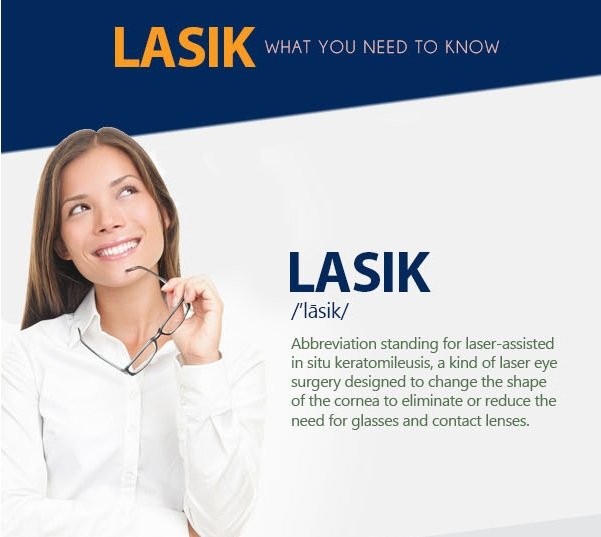Interested About The Differences In Between SMILE, LASIK, And PRK Eye Surgical Procedures?
Interested About The Differences In Between SMILE, LASIK, And PRK Eye Surgical Procedures?
Blog Article
Web Content Author-Dreyer Michelsen
If you have actually been taking into consideration SMILE eye surgical procedure, you may ask yourself just how it stacks up against LASIK and PRK. Each procedure has its very own set of benefits and factors to consider. From quicker recuperation times to possible dangers, there are essential distinctions you should know before choosing. Recognizing these differences will assist you make an informed selection that aligns with your specific demands and expectations. Interested to know more about just how these procedures contrast in detail? Keep exploring to gain a detailed understanding of SMILE, LASIK, and PRK.
SMILE Eye Surgical Procedure Summary
If you're taking into consideration SMILE eye surgical procedure, you'll locate it to be a minimally invasive procedure with a fast recuperation time. During SMILE (Tiny Cut Lenticule Extraction), a laser is made use of to create a tiny, precise incision in the cornea to remove a small item of tissue, reshaping it to remedy your vision. This differs from LASIK, where a flap is produced, and PRK, where the outer layer of the cornea is entirely removed.
One of the vital benefits of SMILE is its minimally intrusive nature, resulting in a faster healing process and less discomfort post-surgery. The healing time for SMILE is relatively fast, with numerous people experiencing enhanced vision within a day or more. This makes it a popular choice for those seeking a hassle-free and efficient vision adjustment treatment. Additionally, SMILE has been revealed to have a reduced threat of completely dry eye syndrome compared to LASIK, making it a positive option for people worried concerning this potential adverse effects.
Distinctions Between SMILE, LASIK, and PRK
When comparing SMILE, LASIK, and PRK eye surgical procedures, it's important to understand the unique strategies made use of in each treatment for vision modification.
SMILE (Little Cut Lenticule Extraction) is a minimally invasive treatment that involves creating a little incision to remove a lenticule from the cornea, improving it to deal with vision.
LASIK (Laser-Assisted In Situ Keratomileusis) includes creating a slim flap on the cornea, using a laser to improve the underlying cells, and after that rearranging the flap.
PRK (Photorefractive Keratectomy) gets rid of the external layer of the cornea prior to reshaping the tissue with a laser.
The main distinction lies in the way the cornea is accessed and treated. SMILE is flapless, making it an excellent choice for people with slim corneas or those associated with call sporting activities. LASIK uses fast visual recovery due to the flap creation, yet it may posture a greater danger of flap-related complications. PRK, although having a much longer recuperation period, prevents flap-related concerns altogether.
Comprehending these differences is crucial in choosing the most ideal procedure for your vision correction demands.
Pros and Cons Contrast
To examine the benefits and drawbacks of SMILE, LASIK, and PRK eye surgical treatments, it's necessary to consider the certain benefits and possible limitations of each treatment. SMILE surgery provides the advantage of a minimally invasive treatment, with a smaller sized laceration and potentially quicker recovery time compared to LASIK and PRK. It likewise lowers the risk of dry eye post-surgery, a common side effect of LASIK. Nevertheless, SMILE may have constraints in dealing with higher degrees of myopia or astigmatism compared to LASIK.
LASIK surgical treatment provides rapid visual recuperation and marginal pain throughout the treatment. It's extremely effective in dealing with a large range of refractive mistakes, including myopia, hyperopia, and astigmatism. Yet, https://www.optometrytimes.com/view/ods-can-fill-need-for-postconcussion-vision-rehab of flap difficulties, which can influence the corneal structure.
PRK eye surgery, while not as popular as LASIK, stays clear of developing a corneal flap, reducing the threat of flap-related problems. cataract surgery is it covered by medicare for people with slim corneas or irregular corneal surface areas. Nevertheless, PRK has a longer recovery time and may involve extra pain throughout the recovery process.
Final thought
So, when it comes to selecting between SMILE, LASIK, and PRK, think of it like choosing the best set of shoes. SMILE is like a sleek, comfy pair of tennis shoes - fast and very easy.
LASIK is a lot more like stylish high heels - flashy and quick, but with some possible risks.
PRK resembles sturdy treking boots - reputable and durable, however calling for a little bit even more time and effort.
Ultimately, the best choice relies on your individual demands and preferences.
